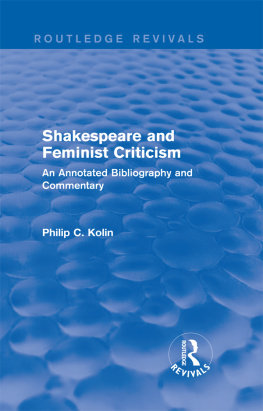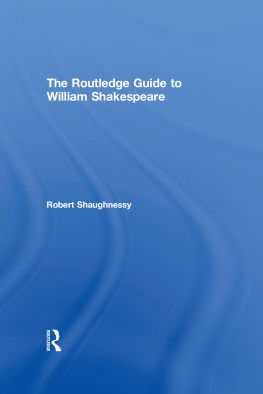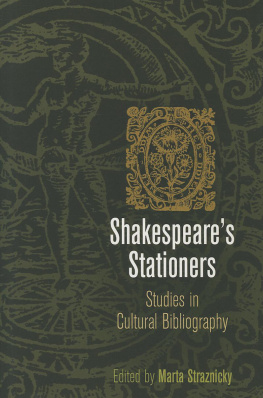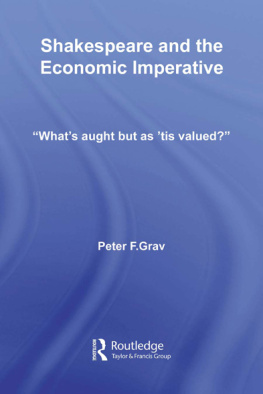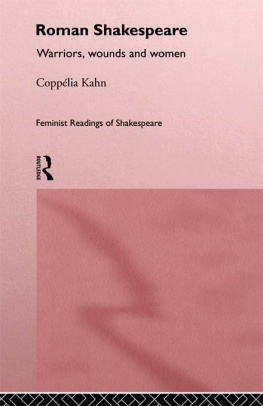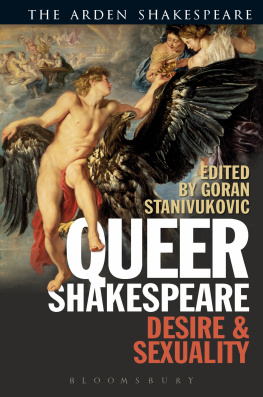1987
353. Adelman, Janet. Born of Woman: Fantasies of Maternal Power in Macbeth . In Cannibals, Witches, and Divorce: Estranging the Renaissance. Ed. Marjorie Garber. Selected Papers from the English Institute. 1985. New Series 11. Baltimore: Johns-Hopkins UP, 1987. 90-121.
The two psychological fantasies of Mac contradictorily deal with an absolute and destructive maternal power and an absolute escape from this power (90). Maternal power is diffused in Mac through the witches and Lady Macbeth who try to reduce Macbeth to a vulnerable infant. Like Richard III, Macbeth wields a bloody masculine axe to escape the maternal presence. Duncan, the androgynous parent (94) who is idealized for his nurturing paternity [yet] is killed for his womanish softness (95), is powerless to protect his son. Duncans androgyny is ambivalent, and in his absence male and female break apart (94). Consequently, Macbeth is at the mercy of maternal malevolence-the witches and Lady Macbeth are persistently identified/fused as one (97). The female in Mac coerces male Macbeth and equates his manhood with murder. Lady Macbeths power over him is more absolute than the witches can achieve (102). The fantasy of escaping their female power is centrally invested (103) in Macbeth, but the ending of the play reveals the dual process of repudiation and enactment of the fantasy (103). The witches punish Macbeth through equivocation, yet the female is punished and eliminated. Macduff is deprived of a nurturing female presence (108) and the traitor Macdonaldwalds body (like Fortune whom he served) is feminized and conquered by an all-male erotic (106). Ultimately, Mac is a recuperative consolidation of male power and the feminine is far more contained than in Ham or Lear . The purely male realm of Mac looks toward Prosperos island.
354. Bergeron, David M., and Geraldo U. De Sousa. Shakespeare: A Study and Research Guide . 2nd. ed. Lawrence: UP of Kansas, 1987. Esp. Feminism and Gender Studies, 137-45.
Assessing the importance of feminist criticism, this section of the Guide provides brief overviews of The Womans Part (item 126); Dusinberre (item 6); Jar dine (item 224); Dash (item 152); Garber (item 156); French (item 155); Pitt (item 165); Cook (item 108); Bamber (item 175); Novy (item 262); Kahn (item 160); Erickson (item 284); Neely (item 298); Sundelson (item 241); and Dreher (item 330).
355. Boose, Lynda E. The Family in Shakespeare Studies; or-Studies in the Family of Shakespeareans; or-The Politics of Politics. Renaissance Quarterly 40 (1987): 707-42.
The tradition which feminist scholarship has challenged is typified by E.M.W. Tillyard and others who regarded the family and gender as givens since they upheld the ideology of a father-headed, father-named nuclear family (711), a position that went unchanged for almost 400 years. Womens roles were also unquestioned except when, like Cleopatra, they broke away from male-ordered bounds. But the emergence of Shakespearean feminism in the mid-1970s turned to non-Freudian psychoanalysis to find out about gender and locate the missing maternal role (715). Feminists found it self-annihilating, however, to restrict their study to nonexistent women writers of the Renaissance, for they would then have to relinquish their claims to interpret the most sacrosanct canonical writer, Shakespeare. Feminist work opened up what we might call a new, scholarly mother-lode (716) in which the feminine side/identity of masculinity was explored and created a newly enfranchised space for latter-day Renaissance man (717). Moving from character analysis to a scrutiny of social institutions, Shakespearean feminism identified the conflict that existed between the patriarchy and a model of feminine fulfillment (720). The question of Shakespeares own views of patriarchy and its institutional subordination of women threatens to become some sort of oath of allegiance upon which feminist critics are compelled to swear (721). Some critics have seen gender reversal and female power in the plays as a way of consolidating the status quo of male hierarchy (721). Ericksons view (item 284) that Shakespeare attacks tyrannical patriarchy but affirms its benevolence contrasts with McLuskies Marxist reading (item 295) that the plays offer so totally masculinized a perspective that the only possible position open to feminist readers is radical resistance (723).
Feminist scholarship right now stands at a crossroads (726). An incipient schism (727) has taken place, squaring off the new historicists with feminists. New historicism, which has displaced and erased women in its consideration of male power, projects a single gendered body of plays. The family is replaced by the court. Feminists have maintained a healthy skepticism toward valorizing a history that was male written and transmitted and that marginalized women. The historic critic wrongly assumes the role of patriarch by making Shakespeare a co-opted servant of state orthodoxies (741); new historicism, which privileges history to control subversive resistance, has its roots in male experience confronting authority.
356. Carducci, Jane S. Shakespeares Titus Andronicus : An Experiment in Expression. Cahiers Elisabethains 31 (1987): 1-9.
TA is not untypical of Shakespeares Roman world, also exemplified in /C, AC, and Cor , that boasts military prowess and [is] bathed in oratory (1). TA embodies Romes male political institutions. Lavinias mute silence represents the failure of her family to find adequate words to express their violent emotions. In the wilderness where Lavinia is raped, Roman oratory is worthless. Marcuss description of Lavinia after she has been mutilated is more appropriate to a painting or tapestry than to a woman. Titus also formalizes his grief in words that do not fit the reality of his daughters rape. Like Lear, Titus turns to madness because he is unable to vent his grief. His unexpressed emotions lead Titus to revenge his daughters mutilation by violating the laws of hospitality. The language of Roman men is limited to externals; it reflects the failure of the Roman masculine ideal.
357. Carlson, Susan. Women in As You Like It: Community, Change, and Choice. Essays in Literature 14 (1987): 151-69.
While there is invigorating freedom and serious consideration of that power and community (166) in AYL, female power is nonetheless restricted through limitations placed on womens language and friendships. Erickson (item 284) is right that androgyny does not help women but supports male-imposed norms. Womens gains are temporary in Arden, which is only a different sort of mans world (161). AYL displays an encoded sexism (167). Though Rosalind displays great ingenuity and freedom in the middle of the play, she is finally left with no choices save marriage as Shakespeare seemingly battles against conventions but ends up affirming them. Rosalinds witty language is undercut by female stereotypes and linguistic patterns (indirection and inversions [155]) which she herself typifies and attacks. As Ganymede, Rosalind doubts, disdains, and blames women. Her linguistic freedom, her comic power for lies, implies betrayal and at the end of the play she is silent as the men recapture a playful language (159). Celia and Rosalind are drawn apart, separated by Rosalinds male disguise. Also showing restrictions on female community (162) are Phebe and Audrey who emphasize the isolation of women in the play, thus defusing female threats. Optimistic readings by French (item 155), McKewin (item 130), and Belsey (item 275) are unfounded. Rather than offering reconciliation and comedic joy, marriage in AYL is more an assumption than a visible institution; even Rosalinds view of matrimony is mockingly brutal (165). Rosalind does not change society but has surrendered the power of choice.
358. Chojnacki, Stanley. Comments: Blurring Genders. Renaissance Quarterly 40 (1987): 743-51.

